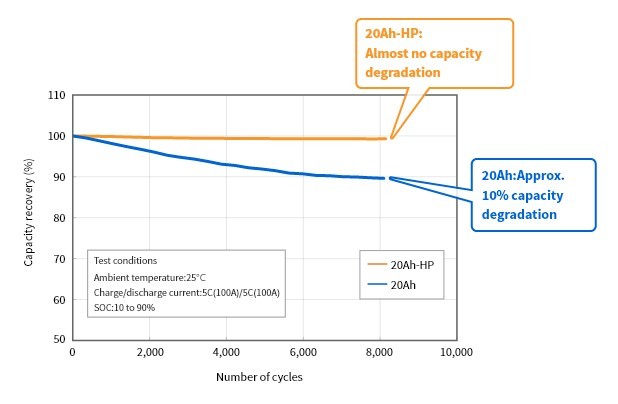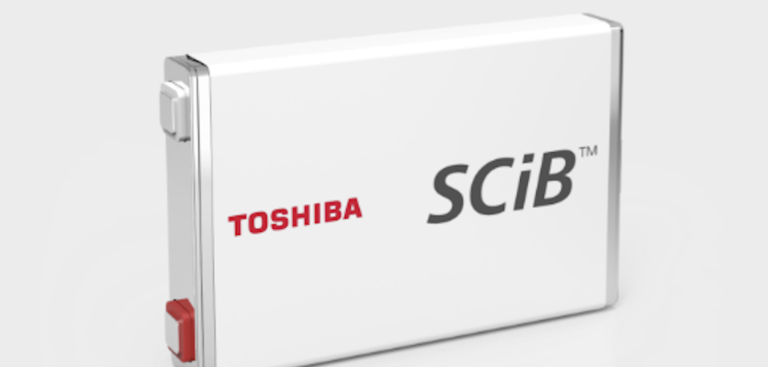Toshiba Corporation has launched a 20Ah-HP rechargeable lithium-ion battery cell, which it says delivers both high energy and high power at the same time, as demanded by the market. Toshiba notes that until now this has required a trade-off for rechargeable lithium-ion batteries.
In an EV, for example, a high-energy battery enables the vehicle to drive further on a single charge –but it lowers power input and output and extends charge times. The company says it drew on its know-how in current high-energy and high-power products to develop a cell that successfully combines the advantages of both.
The cell is ideal for heavy-load applications where high-power input and output are essential, and for situations where battery cells must suppress heat and operate continuously, such as rapid charging of commercial vehicles, regenerative power systems for rolling stock and industrial equipment. It is the same size as Toshiba’s current 20Ah product, enabling current customers to easily upgrade to the improved input and output power with the same module pack.
Toshiba says the new 20Ah-HP cell delivers 1.7 times higher input and 1.6 times higher output than its current 20Ah cell, thanks to an approximate 40% reduction of resistance in the cell. This improvement efficiently suppresses heat generation when a large current is applied, enabling a simpler cooling system design. For example, depending on the customer’s system, water cooling can be simplified to forced air cooling, and forced air cooling simplified to natural cooling. The lowered resistance also reduces overvoltage, allowing the cell to function in a wider range of state-of-charge (SOC).
The 20Ah-HP cell also achieves a longer life than the current 20Ah cell by suppressing heat during continuous charging and discharging, due to the lower internal resistance. Under the test conditions shown below, the cell maintained almost 100% capacity after 8,000 charge/discharge cycles, while the capacity of the current 20Ah cell decreased by approximately 10%.

Toshiba expects to see the new cell deployed in automobiles, industrial equipment and storage battery systems, such as electric ferries, hybrid buses, trucks, hybrid electric vehicles (HEVs) and plug-in HEVs (PHEVs).


